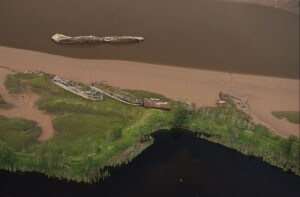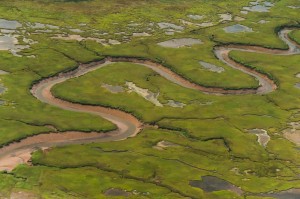
A new study has come out that singles out estuaries as being able to absorb the blows of climate change and protect coasts better than human-constructed diking.
The study by Boston University found that estuaries are able to withstand hurricanes and can even surmount rising sea levels by migrating to different areas.
An article on the study by The Weather Network notes that the Maritimes have a higher proportion of estuaries than other areas in the world. Seventeen years ago, CCNB and our partners succeeded in mobilizing the necessary agencies to protect the Musquash Estuary on the Bay of Fundy. As a designated Marine Protected Area (MPA), industrial development is not allowed in the estuary.

Speaking to The Weather Network, Dr. Jeff Ollerhead, a geography and environment professor and dean of science at Mount Allison University, said salt marshes on the Bay of Fundy are relatively healthy, but many on the Atlantic and Northumberland Strait coasts are degrading.
Ollerhead said Atlantic provincess would benefit greatly if they would embrace the marshes’ natural benefits.
“Otherwise,” said Dr. Ollerhead, “we’re going to spend ever increasing amounts of money trying to keep the shoreline exactly where it is and exactly in the state that it is, and that’s going to be increasingly expensive and increasingly futile.”

We’re fortunate to have these valuable ecological areas around New Brunswick’s coastline. As CCNB board member and former director Janice Harvey wrote in a past edition of our EcoAlert Magazine, “estuaries rank along with tropical rainforests and coral reefs as the world’s most productive ecosystems — more productive than other rivers and the ocean that influence them from either side. While we in eastern Canada see no rainforest and few coral reefs, we live amidst and beside myriad and diverse estuaries that support our historically abundant coastal and marine wildlife.”


